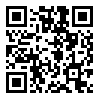Sun, Dec 21, 2025
Volume 4, Issue 2 (Spring 2018)
Iran J Neurosurg 2018, 4(2): 117-122 |
Back to browse issues page
Download citation:
BibTeX | RIS | EndNote | Medlars | ProCite | Reference Manager | RefWorks
Send citation to:



BibTeX | RIS | EndNote | Medlars | ProCite | Reference Manager | RefWorks
Send citation to:
Salehi S, Nemati H, Soltani A. Intraoperative Neurophysiology Monitoring During Selective Dorsal Rhizotomy for Spastic Cerebral Palsy. Iran J Neurosurg 2018; 4 (2) :117-122
URL: http://irjns.org/article-1-120-en.html
URL: http://irjns.org/article-1-120-en.html
1- Shiraz Neuroscience Research Center, Shiraz University of Medical Sciences, Shiraz, Iran
2- Department of Neurosurgery, School of Medicine, Shiraz University of Medical Sciences, Shiraz, Iran ,sina253@gmail.com
2- Department of Neurosurgery, School of Medicine, Shiraz University of Medical Sciences, Shiraz, Iran ,
Abstract: (7823 Views)
Selective Dorsal Rhizotomy (SDR) is a neurosurgical procedure currently used as a surgical treatment of children with spasticity in their legs. In SDR, the dorsal roots from L2 to S1 or S2 is partially sectioned. The primary goal of SDR is to reduce spasticity and improve the range of movement with preservation of muscle strength. The dorsal roots involved in spasticity are identified on the basis of intraoperative electrophysiological stimulation. Currently, SDR is most commonly performed for the treatment of spastic cerebral palsy in children. We report an 8-year-old child with spastic cerebral palsy who underwent intraoperative neurophysiology monitoring during SDR for treating his spasticity. Before the operation, patient’s examination revealed more spasticity at the lower extremities, mild spasticity at the upper extremities, and occurrence of fixed contracture of his both ankle joints. Intraoperative neuromonitoring (consisting of motor evoked als, direct nerve root stimulation, and free run electromyography) was performed during the operation. Electrophysiological monitoring was initially used to help differentiate between the ventral and dorsal roots and cutting the abnormal sensory rootlets. After the operation, his motor power of the lower extremities in the proximal and distal muscles was 4 out of 5, his saddle sensation became normal, and there was no urinary and stool incontinency. Four weeks after the surgery, he could walk about 10 m without help. His examination at 2 and 4 weeks after the operation showed was no sign of sensory deficits, urinary, or stool incontinency. Two months after the operation, the patient could walk independently without help while before the operation, he could not.
Type of Study: Case report |
References
1. Aquilina K, Graham D, Wimalasundera N. Selective dorsal rhizotomy: An old treatment re-emerging. Archives of Disease in Childhood. 2015; 100(8):798-802. [DOI:10.1136/archdischild-2014-306874] [PMID] [DOI:10.1136/archdischild-2014-306874]
2. Farmer JP, McNeely PD. Surgery in the dorsal roots for children with cerebral palsy. Operative Techniques in Neurosurgery. 2005; 7(3):153-6. [DOI:10.1053/j.otns.2005.01.001] [DOI:10.1053/j.otns.2005.01.001]
3. Trost JP, Schwartz MH, Krach LE, Dunn ME, Novacheck TF. Comprehensive short-term outcome assessment of selective dorsal rhizotomy. Developmental Medicine & Child Neurology. 2008; 50(10):765-71. [DOI:10.1111/j.1469-8749.2008.03031.x] [PMID] [DOI:10.1111/j.1469-8749.2008.03031.x]
4. Nordmark E, Josenby AL, Lagergren J, Andersson G, Stromblad LG, Westbom L. Longterm outcomes five years after selective dorsal rhizotomy. BMC Pediatrics. 2008; 8:54. [DOI:10.1186/1471-2431-8-54] [PMID] [PMCID] [DOI:10.1186/1471-2431-8-54]
5. Turner RP. Neurophysiologic intraoperative monitoring during selective dorsal rhizotomy. Journal of Clinical Neurophysiology. 2009; 26(2):82-4. [DOI:10.1097/WNP.0b013e31819f9077] [PMID] [DOI:10.1097/WNP.0b013e31819f9077]
6. Steinbok P, Tidemann AJ, Miller S, Mortenson P, Bowen-Roberts T. Electrophysiologically guided versus non-electrophysiologically guided selective dorsal rhizotomy for spastic cerebral palsy: A comparison of outcomes. Child's Nervous System. 2009; 25(9):1091-6. [DOI:10.1007/s00381-009-0908-5] [PMID] [DOI:10.1007/s00381-009-0908-5]
7. Staudt LA, Nuwer MR, Peacock WJ. Intraoperative monitoring during selective posterior rhizotomy: Technique and patient outcome. Electroencephalography and Clinical Neurophysiology. 1995; 97(6):296-309. [DOI:10.1016/0924-980X(95)00128-8] [DOI:10.1016/0924-980X(95)00128-8]
8. Deletis V, Vodusek DB, Abbott R, Epstein FJ, Turndorf H. Intraoperative monitoring of the dorsal sacral roots: Minimizing the risk of iatrogenic micturition disorders. Neurosurgery. 1992; 30(1):72-5. [DOI:10.1227/00006123-199201000-00013] [PMID] [DOI:10.1227/00006123-199201000-00013]
9. Winn HR. Youmans and Winn Neurological Surgery, 4-Volume Set (Youmans Neurological Surgery) 7th edition. Amsterdam: Springer; 2016.
10. Mutlu A, Livanelioglu A, Gunel MK. Reliability of Ashworth and Modified Ashworth scales in children with spastic cerebral palsy. BMC Musculoskeletal Disorders. 2008; 9:44. [DOI:10.1186/1471-2474-9-44] [PMID] [PMCID] [DOI:10.1186/1471-2474-9-44]
11. McLaughlin JF, Bjornson K, Temkin N, Steinbok P, Wright V, Reiner A, et al. Selective dorsal rhizotomy: Meta-analysis of three randomized controlled trials. Developmental Medicine & Child Neurology. 2002; 44(1):17-25. [DOI:10.1017/S0012162201001608] [PMID] [DOI:10.1017/S0012162201001608]
12. Graham D, Aquilina K, Cawker S, Paget S, Wimalasundera N. Single-level selective dorsal rhizotomy for spastic cerebral palsy. Journal of Spine Surgery. 2016; 2(3):195-201. [DOI:10.21037/jss.2016.08.08] [PMID] [PMCID] [DOI:10.21037/jss.2016.08.08]
13. Arens LJ, Peacock WJ, Peter J. Selective posterior rhizotomy: A long-term follow-up study. Child's Nervous System. 1989; 5(3):148-52. [DOI:10.1007/BF00272116] [PMID] [DOI:10.1007/BF00272116]
14. Nelson KB, Ellenberg JH. Children who 'outgrew' cerebral palsy. Pediatrics. 1982; 69(5):529-36. [PMID] [PMID]
15. Van Schie PE, Vermeulen RJ, van Ouwerkerk WJ, Kwakkel G, Becher JG. Selective dorsal rhizotomy in cerebral palsy to improve functional abilities: Evaluation of criteria for selection. Child's Nervous System. 2005; 21(6):451-7. [DOI:10.1007/s00381-004-1105-1] [PMID] [DOI:10.1007/s00381-004-1105-1]
Send email to the article author
| Rights and Permissions | |
 |
This work is licensed under a Creative Commons Attribution-NonCommercial 4.0 International License. |






